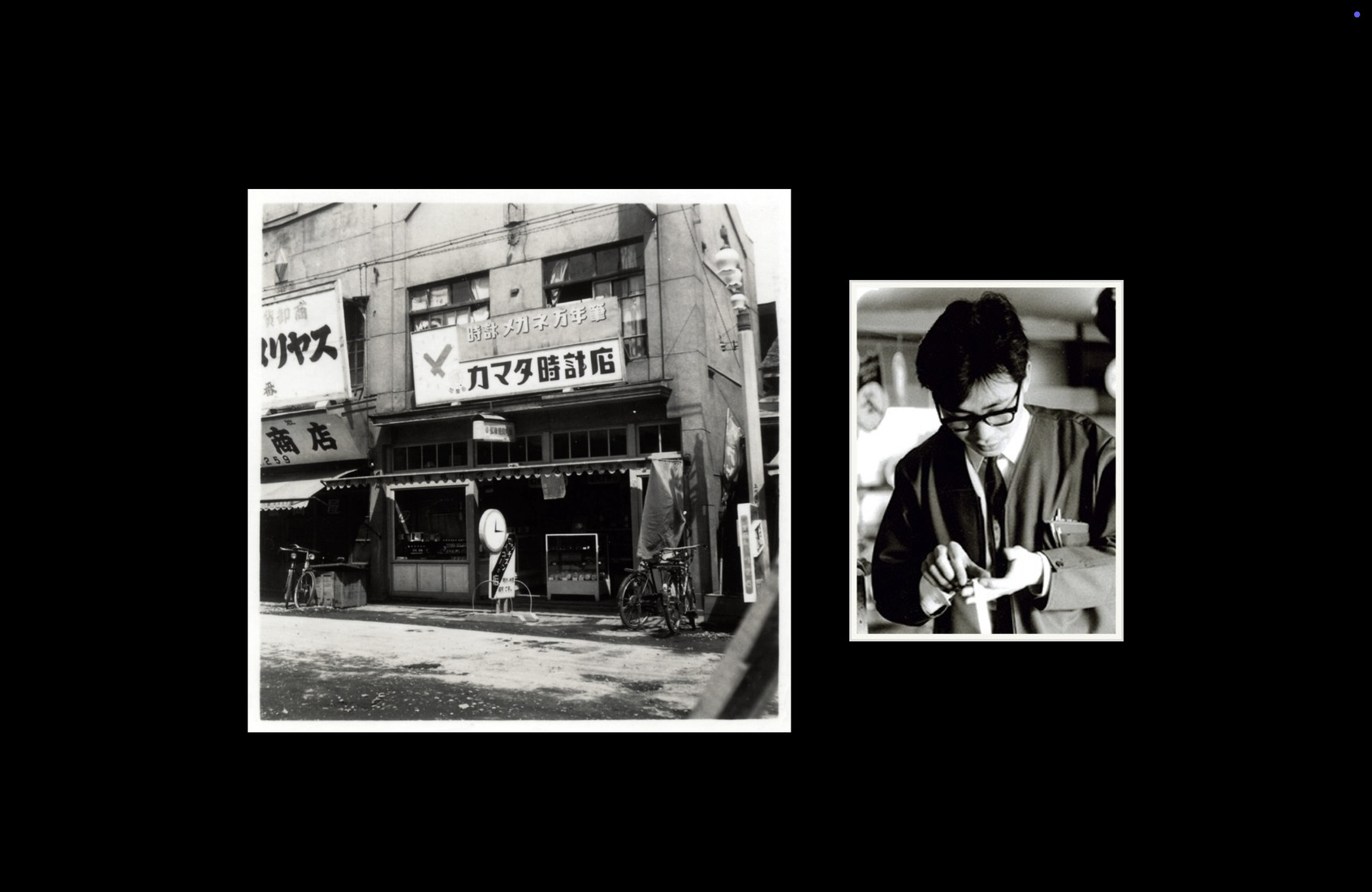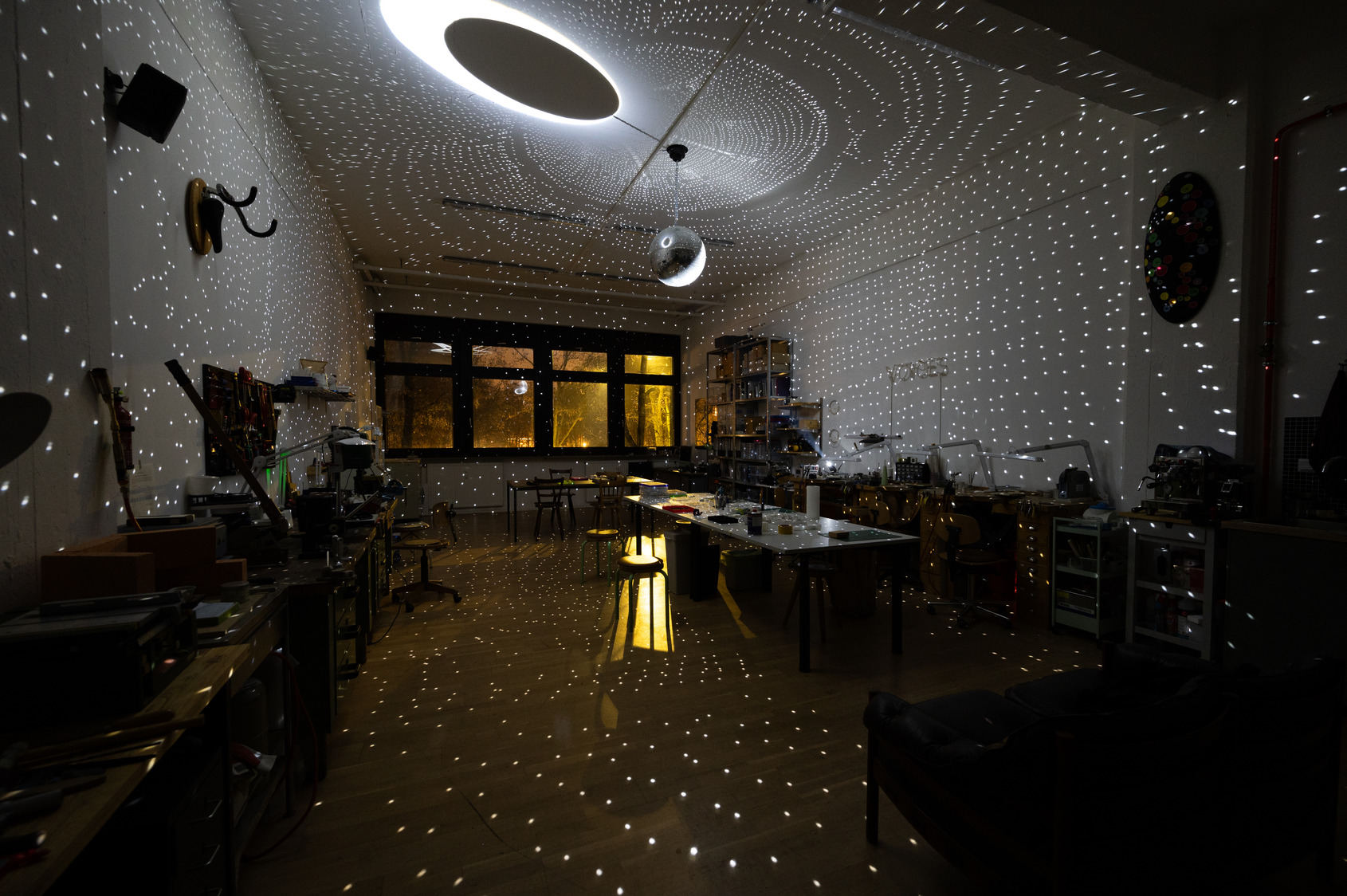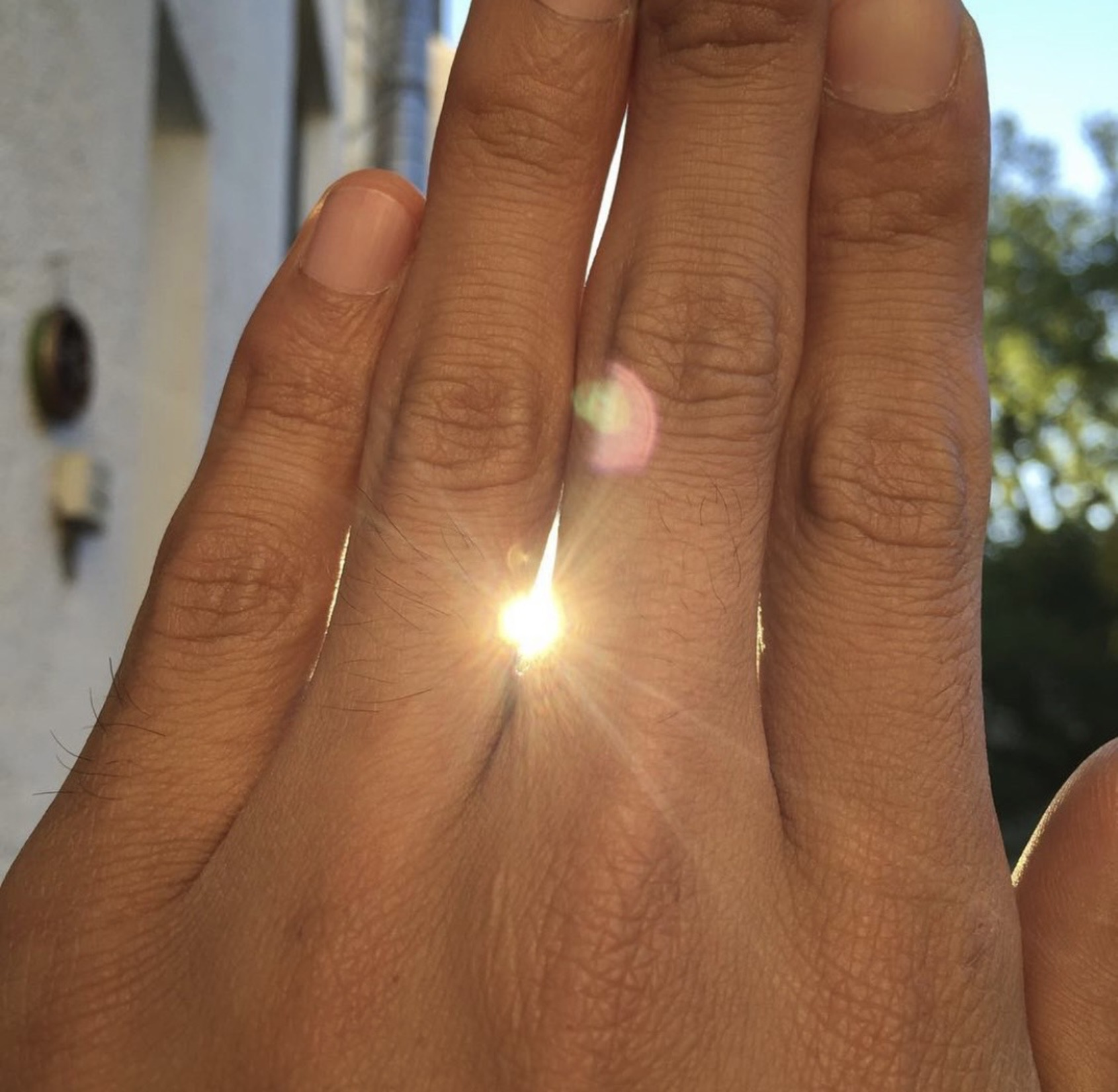The Development of Jiro Kamata’s Works
From the outset of his artistic practice, Jiro Kamata has been deeply engaged in exploring materials related to light and memory. Through form design and experimental surface treatments, he has developed a unique spectrum of light and color, creating mesmerizing visual effects while imbuing his works with emotional depth.
SUNGLASSES
In his early explorations of how various materials interact with light, Jiro Kamata discovered in sunglasses a distinct kind of color refraction—one that differed fundamentally from that of gemstones. He began combining tinted lenses of varying shapes and hues into sculptural forms, incorporating laser engraving and photographic etching techniques to create imagery. Through this process, Kamata transforms everyday materials into contemplative jewelry, revealing a philosophical dimension within the language of adornment.
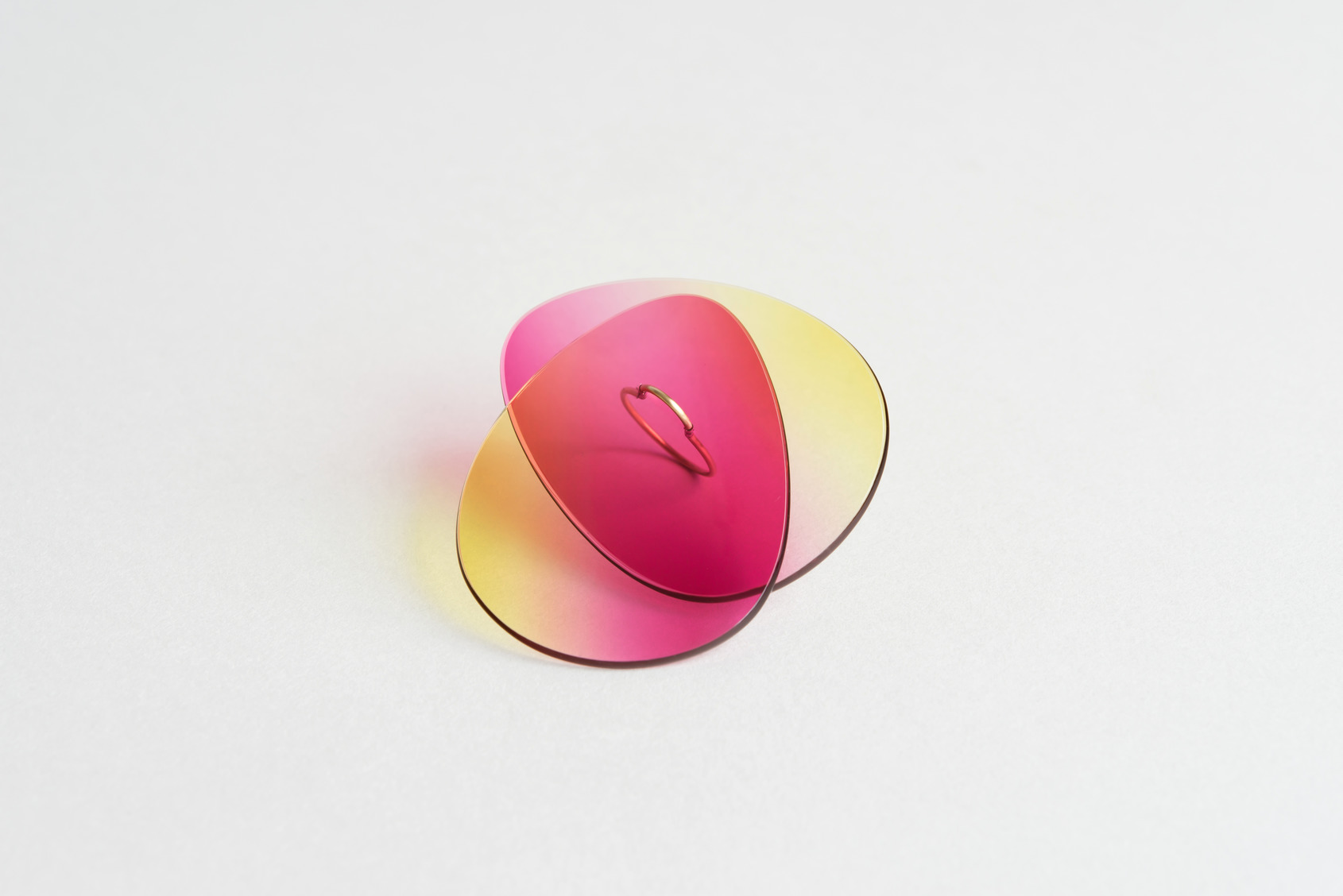 Sunglasses © Jiro KamataMOMENTOPIA
Sunglasses © Jiro KamataMOMENTOPIAStarting in 2008, the artist began experimenting with vintage camera lenses from Germany and Japan. By applying opaque coatings to add color, the lenses not only took on a gem-like polished sheen but also reflected surrounding imagery. Kamata adorned these lenses with minimalist metal forms, allowing each piece to emit a softly diffused, otherworldly glow.
This body of work, titled
Momentopia, evokes a mysterious, utopian aura. The camera lenses used in the pieces symbolize memories embedded in the material itself—infusing contemporary jewelry with new meaning and value. Upon its debut,
Momentopia drew significant attention from the art world, marking the beginning of Kamata’s inclusion in major international museum collections.
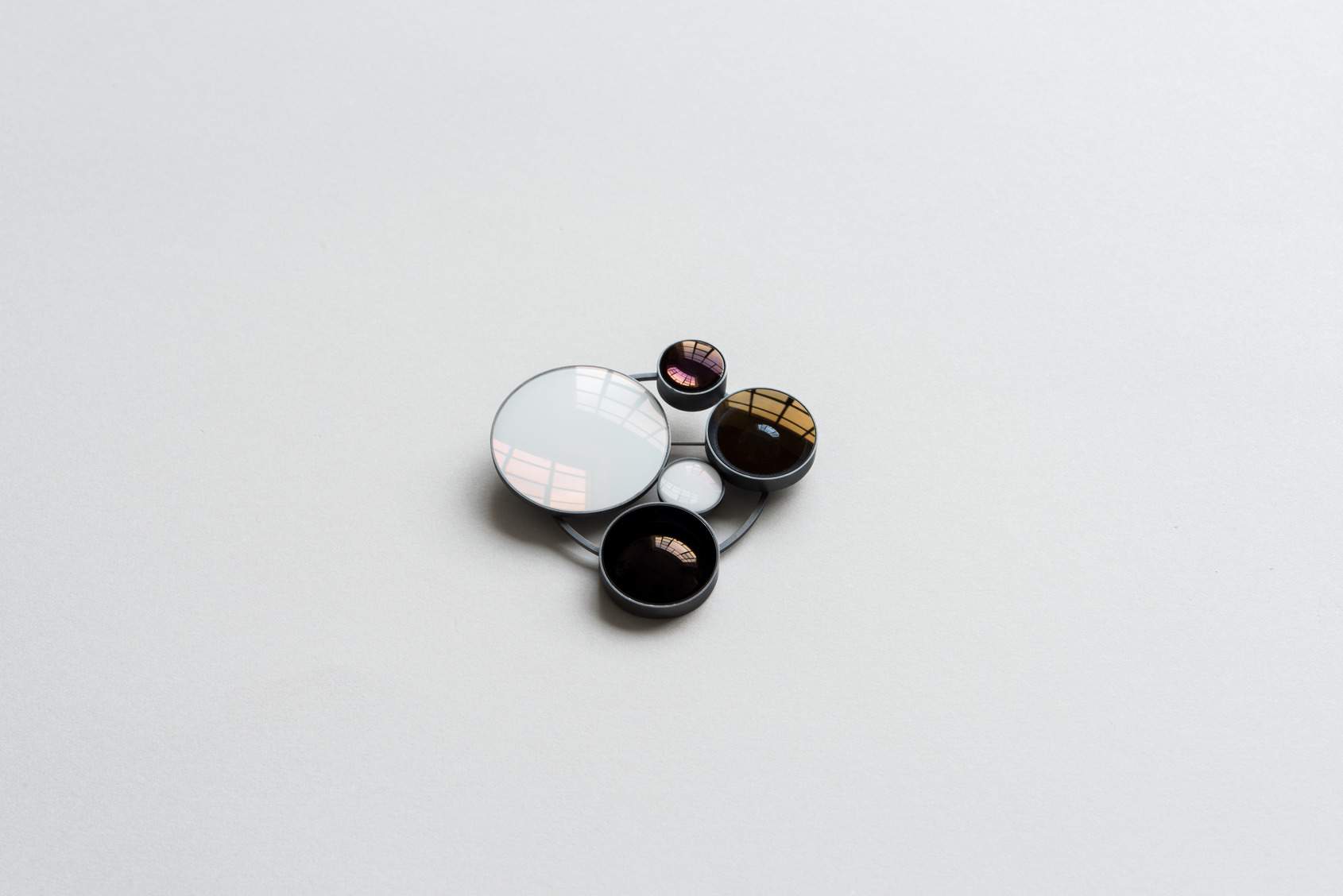 Momentopia © Jiro KamataBI
Momentopia © Jiro KamataBILater, during a journey through Chile’s Atacama Desert, the artist was deeply moved by the awe-inspiring sight of the setting sun and the rising full moon appearing simultaneously in the vast sky. After the sun disappeared below the horizon, the moon rose like a second sun. In 2010, Kamata discovered a special type of coated glass—known as a laser dichroic mirror or filter—that could project two different colors in opposite directions.
He titled the resulting series
BI, in tribute to the coexisting presence of sun and moon. The works explore the duality of light and color, capturing the phenomenon of simultaneous reflection and projection in two distinct hues.
 BI © Jiro KamataHOLON
BI © Jiro KamataHOLONIn 2019, Jiro Kamata held a retrospective exhibition in Taiwan, which was warmly received by both audiences and collectors. Following close collaboration with the exhibition’s organizer, ALIEN MODE, Kamata returned to his investigation of camera lenses as artistic material.
Through the meticulous process of collecting and disassembling numerous lenses, the artist came to see the precision and purity of the lens glass as comparable to the rarity of pearls and gemstones. Around this time, he also discovered the potential of PVD (Physical Vapor Deposition) coating—a vacuum-based thin-film technology that not only enables flawless, uniform coloring, but also creates a holographic, three-dimensional visual effect on concave and convex lens surfaces.
As Kamata continued his creative and technical explorations, it felt as though each lens became a vessel for time travel. When worn, the pieces not only reflect their surrounding environment but also invite self-reflection. The wearer becomes a complete individual—and simultaneously, an inseparable part of a larger environment. This concept gave rise to the series name:
HOLON.
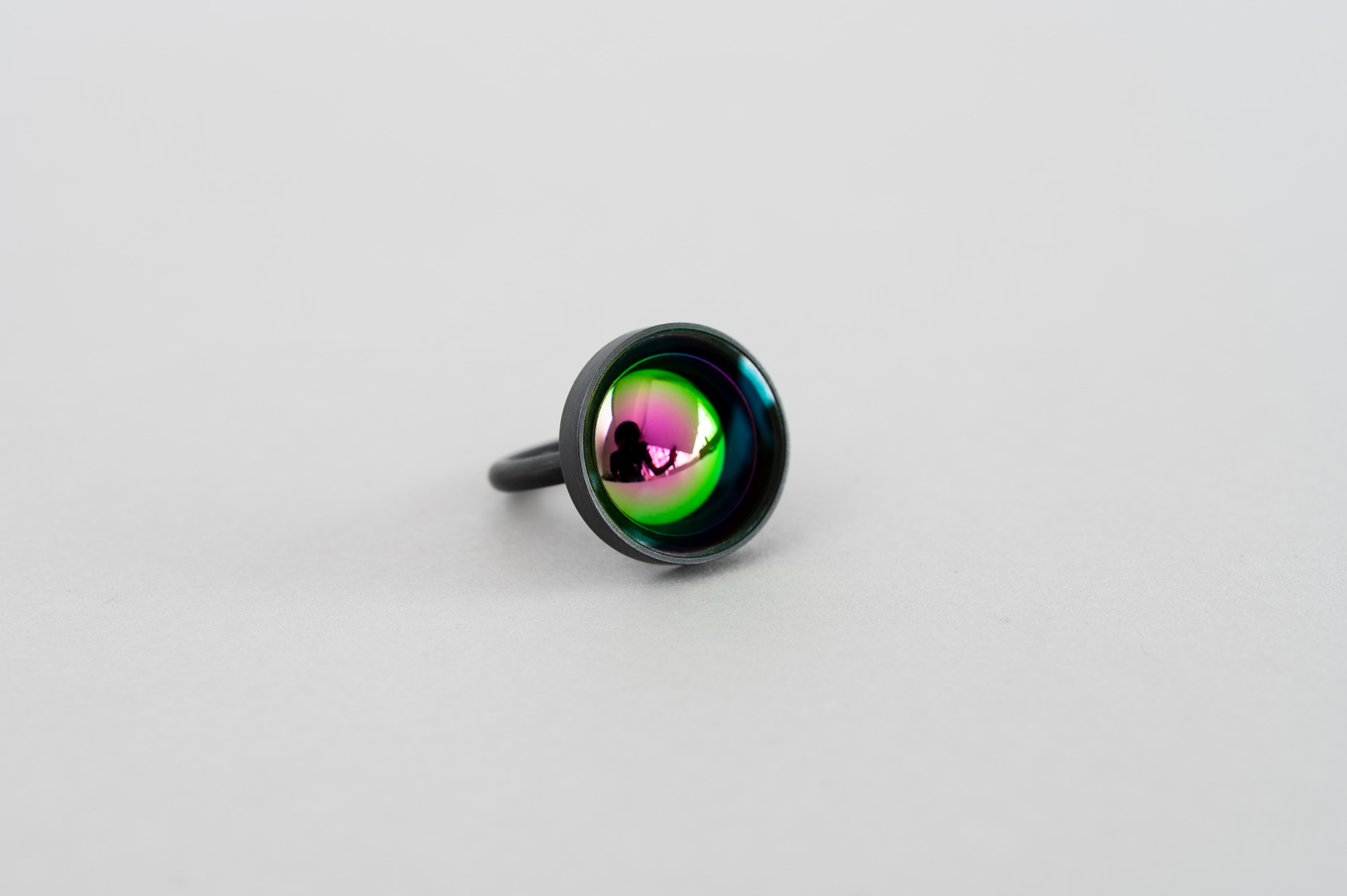 Holon © Jiro KamataCELESTIAL EYESInspirations
Holon © Jiro KamataCELESTIAL EYESInspirationsThrough his collaboration with ALIEN MODE, Jiro Kamata came to appreciate the institution’s dedication to crafting contemplative experiences through minimalist architecture, refined materials, and an integration of natural light and surrounding greenery. This unique atmosphere—designed as a passage to experience art—blurs the boundary between art and everyday life, embodying a philosophy where art becomes a lived experience.
Upon returning to Munich, the artist visited the headquarters of the European Southern Observatory (ESO). This international research institution represents a collective European effort to build the world’s most advanced and largest astronomical telescopes, installed in Chile’s Atacama Desert to observe the cosmos from the Southern Hemisphere. The fundamental element these instruments rely on is light—a conduit of information and meaning. In that moment, Kamata recalled a moonlit night in the Atacama, when the full moon rose after sunset, and he was once again transported back to a childhood dream: to grasp the star-filled skies and the flowing arc of the Milky Way.
Another formative visual experience occurred at Rye, on the southeastern tip of the Australian continent. Kamata had traveled there to witness the sunset at the edge of the Southern Hemisphere. As he arrived, the sun was descending, and he noticed how the vast coastal horizon curved gently, mirrored by an arched gradient in the sky—shades of blue, orange, and pink. It reminded him that the Earth is round, and that the motion of celestial bodies follows curved trajectories.
 Celestial Eyes © Jiro Kamata
Celestial Eyes © Jiro KamataThese encounters inspired a bold new direction in his work: to design spherical lenses capable of capturing light as completely as possible—recording visual information from the world, reflecting rare colors and phenomena, and offering wearers an intimate experience of a microcosmic universe. In doing so, Kamata seeks to transcend conventional boundaries and open new perceptual pathways through art.
Material and MethodJiro Kamata made a pivotal decision to create lenses of his own design. Departing from the use of traditional camera lenses, he turned instead to laboratory-grade quartz, a material commonly used in telescopes. Quartz offers exceptional hardness and unparalleled optical clarity, making it ideal for his explorations of light and perception.
Kamata shapes each lens by slicing two segments from a quartz sphere and fusing them into a double-convex lens, forming a lentil-like structure. The word lens itself shares etymological roots with lentil, referencing this very form.
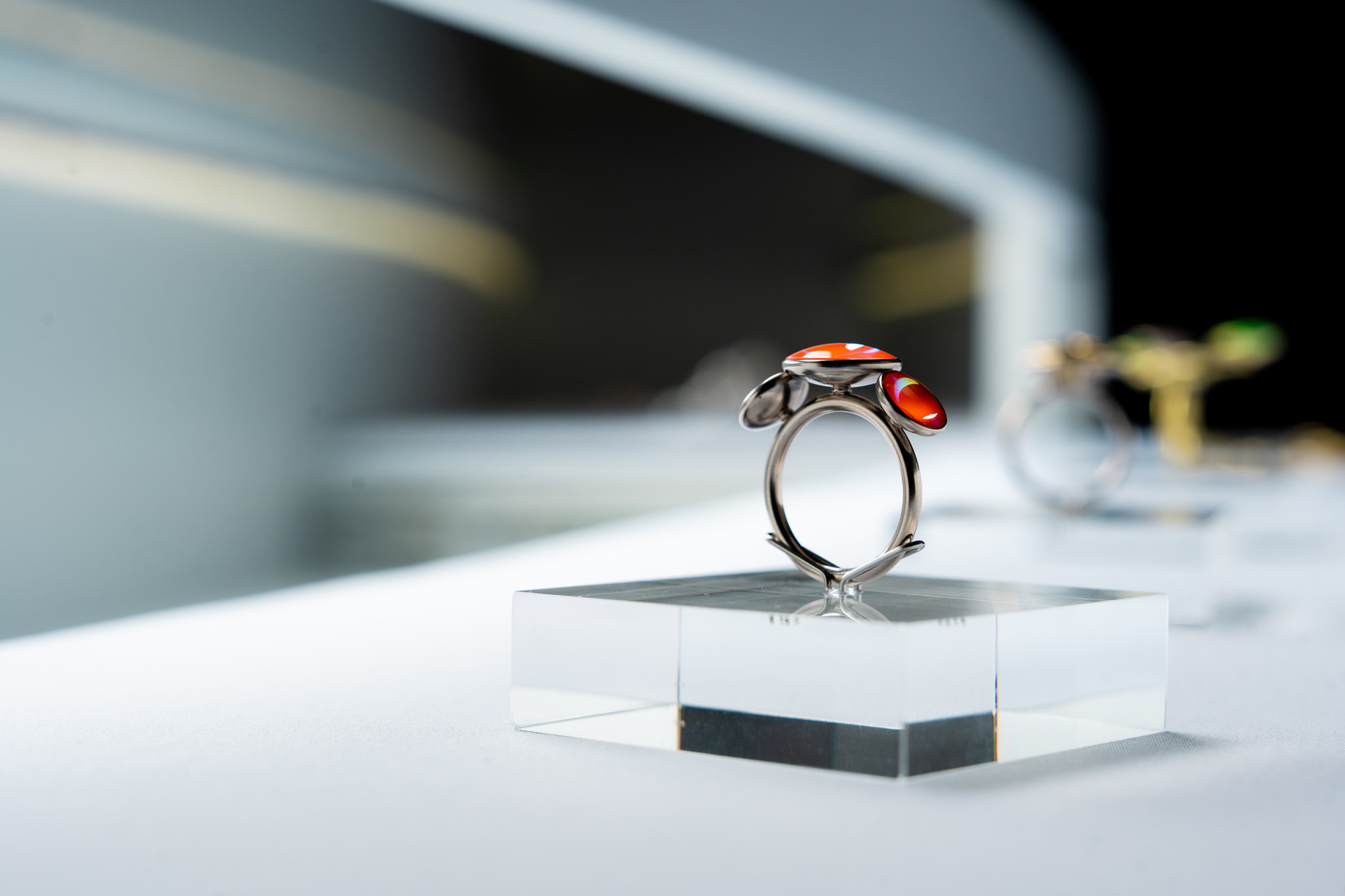 Celestial Eyes © Jiro Kamata
Celestial Eyes © Jiro KamataDrawing upon his extensive experience—having dismantled thousands of cameras and studied tens of thousands of individual lenses—Kamata discovered that double-convex lenses coated with PVD (Physical Vapor Deposition) are especially effective in capturing light. This technique enables the projection of vivid, three-dimensional holographic images at the apex of the lens sphere. Using materials such as gold, silver, or fluorescent pigments in the PVD coating process, Kamata achieves stunning visual effects that elevate the optical and emotional intensity of each piece.
Style and InterpretationJiro Kamata named his newly developed double-axis convex quartz lens the ALIEN LENS—a tribute to his artistic partner and a symbol of a renewed perspective on life and the cosmos. This lens became the conceptual foundation of the
Celestial Eyes series.
Each ALIEN LENS reveals a misty outer ring created by the internal reflection between the two convex surfaces, resembling the orbit of a planet. At the center lies a sharply defined, mirror-like curvature that, when the piece is in motion, reflects its surroundings in real time. This creates an ongoing dialogue between the object, its environment, and the wearer—continually recording moments in space and time.
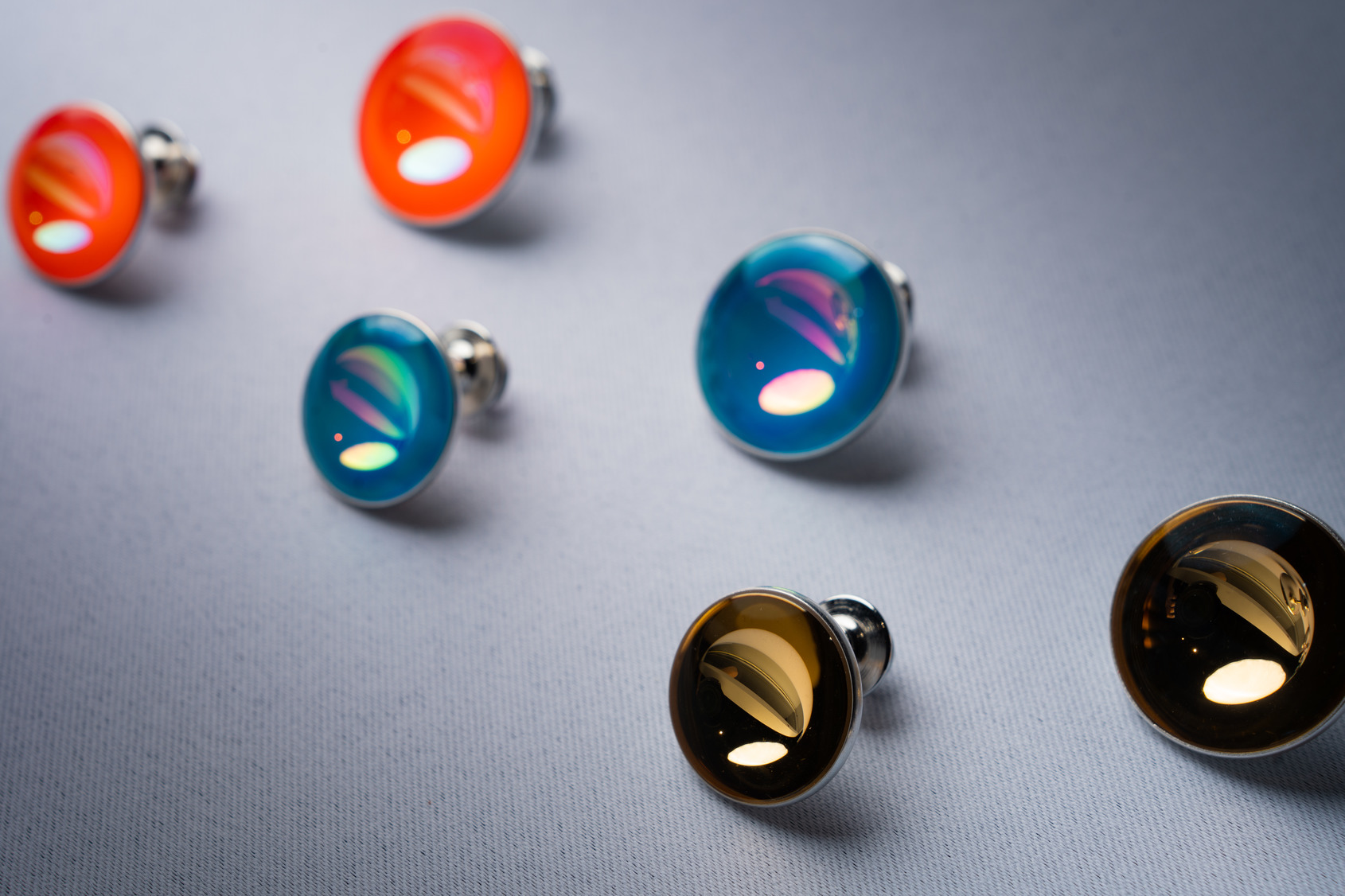 Celestial Eyes © Jiro Kamata
Celestial Eyes © Jiro KamataKamata applies PVD coatings in poetic colors inspired by celestial light: gold represents the sun, silver symbolizes the moon, and fluorescent hues evoke the shimmering brilliance of distant galaxies.
The
Celestial Eyes series uses minimalist forms to express the interconnectedness of star systems and the universe. Merging principles from contemporary visual art and the Light and Space movement, each piece responds to movement by generating a contingent visual scene—an image that is shaped by and inseparable from the surrounding world.
What the eye perceives is not a singular truth, but rather a projection shaped by personal understanding and emotional resonance. In this way, the wearer becomes an active participant, completing the artistic experience. Through
Celestial Eyes, Kamata invites wearers to activate their innate perception, to inhabit each moment of life with awareness, and to engage in memory and contemplation through the lens of time.
Celestial Eyes: Jiro Kamata
2025.01.10 (Fri.) – 2026.01.11(Sun.)
Organizer |ALIEN ART CENTRE
Curator|Yaman Shao
Artist|Jiro Kamata
Initiated by|ALIEN MODE
Fashion|APUJAN
Filming Artist|Hailing Wang
Photographer|Chen Yung Hua
Visual Interpretation|Liu Hsin Yu
Performance Artist | Lala Sue
Academic Host|Richard Chang
Space Development|Hayato Mitzutani
Visual Design|Elaine Tsai
Documentary|Wanying Xie
Box Designer|Julia Andratschke
Special Thanks to|Min-Ling Hsieh, Mole Hsu, Hairstylist Artist - Weic Lin, Make Up Artist - Sunny Hsu








